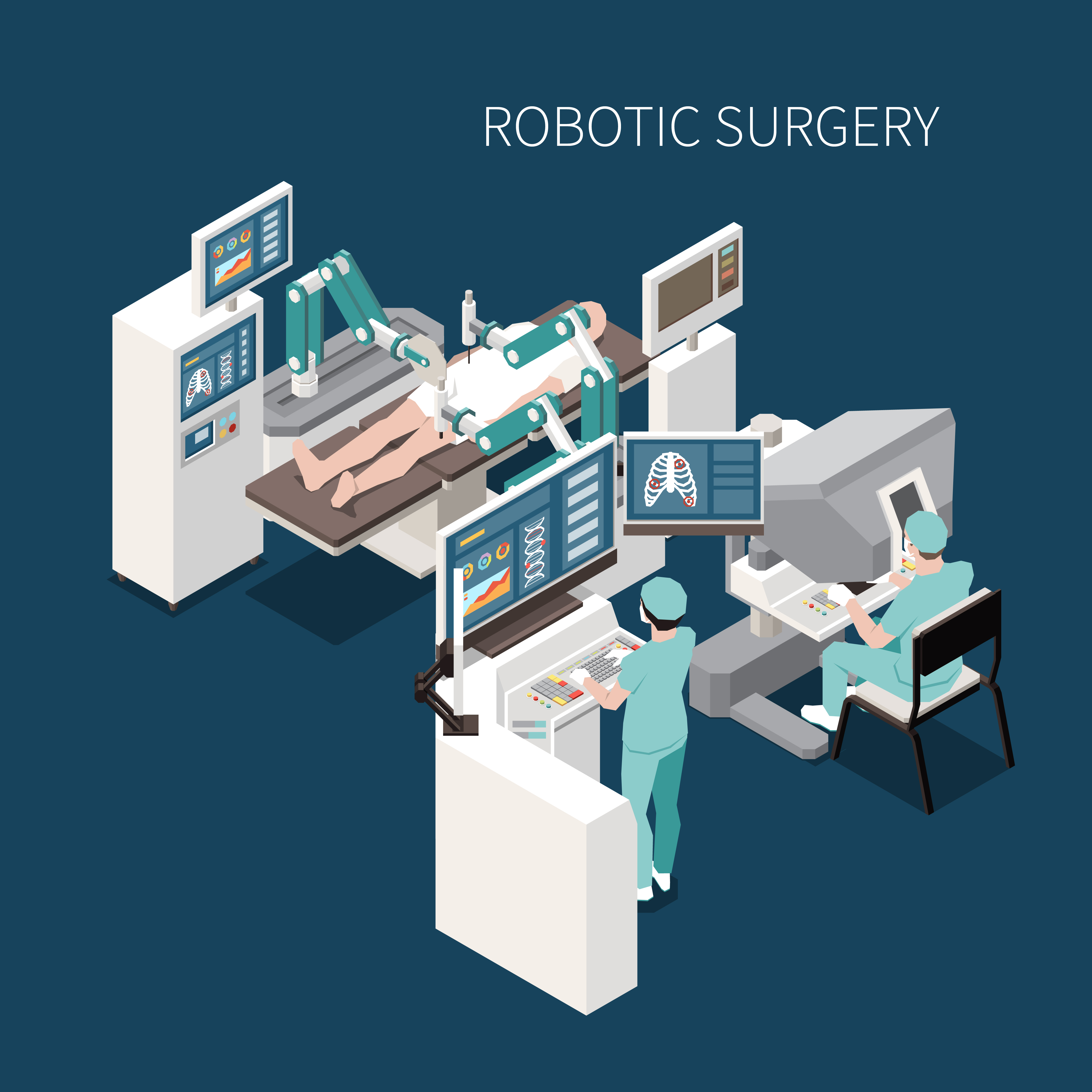Table of Contents
Introduction
The field of surgery is undergoing a transformation due to the combination of robotics and artificial intelligence (AI). These technologies are improving overall patient safety, decreasing recovery times, and increasing surgical precision. The use of AI and robotics in surgery presents possible answers to persistent problems as healthcare systems throughout the world struggle with rising demands and resource shortages.
What Are AI and Robotics in Surgery?
In robotic-assisted surgery, intricate procedures are carried out with greater accuracy by means of robotic systems that are managed by surgeons. These technologies enable minimally invasive methods and offer high-definition, three-dimensional imaging. AI helps in surgery planning, intraoperative supervision, and postoperative care by analyzing large datasets. They work together to enhance patient experiences and surgical results.
Conventional Surgical Techniques: Drawbacks and Difficulties
Despite their effectiveness, conventional surgical methods have a number of drawbacks:
- Limited Precision: The accuracy of manual processes may be impacted by human dexterity limitations.
- Longer Recovery Times: Hospital stays and recovery times following open procedures are frequently longer.
- Greater Complication Risk: Infections and postoperative problems are more likely to occur with larger incisions.
- Resource-intensive:: Conventional procedures can take a long time and use a lot of hospital resources.
How Robotics and AI Address Surgical Challenges
The integration of robotics and AI into surgical practices offers solutions to the aforementioned limitations:
- Improved Accuracy and Management:
Surgeons may perform intricate surgeries with more control and precision thanks to robotic devices. This accuracy enhances surgical results and lowers the possibility of unintentional tissue harm. - Techniques That Are Minimally Invasive:
Smaller incisions are frequently used in robotically assisted surgeries, which results in less blood loss, less scarring, and shorter hospital stays. Patients gain from less discomfort following surgery and faster recovery times. - Decision Support Driven by AI:
Preoperative planning, intraoperative navigation, and postoperative monitoring are all aided by AI systems that evaluate patient data. AI, for example, can anticipate possible issues, enabling preventative measures. - Enhanced Results for Patients:
According to studies, AI-assisted operations can cut recovery times by 20% on average and reduce problems by up to 30%. These advancements lower healthcare costs and increase patient happiness.
Challenges and Considerations
Despite the significant advantages, some difficulties still exist:
- High Initial Costs: Purchasing and maintaining robotic systems can be costly, which may restrict accessibility in environments with limited resources.
- Training Requirements: To properly operate these cutting-edge technologies, surgeons and medical personnel need specific training.
- Data Security: To protect patient information when using AI, strong data protection procedures are required.
Adoption and Global Views
Globally, the use of AI and robotics in surgery is expanding. A PwC survey states that a sizable portion of patients are open to having operations done with robotic or artificial intelligence support. Research and investment in this field are being fueled by this increasing acceptability.
The integration of these technologies is especially promising in India. AI and robotics can fill surgical care gaps in areas with a large population and a variety of healthcare demands, particularly in underprivileged or rural areas. These techniques have the potential to democratize access to high-quality surgical procedures by facilitating tele-surgery and remote consultations.
Conclusion:
With improved accuracy, safety, and efficiency, robotics and artificial intelligence have the potential to completely transform surgical procedures. In order to satisfy the increasing demands of patient care, technology will need to be integrated into healthcare systems as it continues to advance. We may anticipate a time when surgical procedures are safer, more efficient, and available to everyone if we embrace these advancements.
